1. The ONE Thing with Cal Newport
2. The Difference Between Being "in the Zone" and Deep Work
2.1. In the Zone
2.1.1. We often get in the zone by chance
2.1.2. Often only after hours of procrastination
2.2. Deep Work
2.2.1. Is intentional, methodical
2.2.2. It's essential to have rituals to prepare your mind for it
2.2.2.1. e.g. placing a 'Do Not Disturb' sign on your desk, or going to a library to work
3. How to Rewire Your Brain with Productive Meditation
3.1. Our brains are wired to be easily distracted, which is why we find it hard to focus on one task
3.2. To rewire your brain, use moments that would otherwise be spent unproductive to consider a problem you need to take care of without letting your mind change subjects
3.2.1. e.g. while you walk the dog or during your commute to work
3.3. To get started, ask yourself questions that identify different issues in solving a given problem
3.3.1. Once you've landed a specific target, ask yourself: "What do I need to accomplish my goal?"
4. How to Restore Your Energy
4.1. Scheduling both work and free time is essential to restoring your energy
4.2. By scheduling everything you do, you'll free up time for being mindful of how you spend it
4.3. At the beginning of every day, create a schedule with 30-minute blocks and schedule everything from 'dinner' to 'reading'
4.4. It's ok to modify your schedule if things change; the important part is to cultivate awareness of how you spend your day
5. About the Book
5.1. Title
5.1.1. Deep Work
5.1.2. Rules for Focused Success in a Distracted World
5.2. Published
5.2.1. 2016
5.2.2. Grand Central Publishing
5.3. Author
5.3.1. Cal Newport
5.3.1.1. Cal Newport, Ph.D., lives in Washington, DC, where he is a writer and an assistant professor of computer science at Georgetown University.
5.3.1.2. He also runs the popular website Study Hacks: Decoding Patterns of Success.
5.4. Get it on Amazon
6. Multitasking Does Not Equal Productivity.
6.1. When we switch from task A to task B, our attention remains on task A, which means we can only half-focus on task B
6.2. Similarly, electronic notifications have a detrimental effect on our productivity
6.2.1. It may seem harmless to keep our social media tabs open all the time while we work...
6.2.2. But merely seeing notifications pop up interrupt our focus, even if we ignore them for a while before checking on them
6.3. Workers feel like they're working more than ever
6.3.1. That's because completing small tasks and moving information around makes us feel like we've accomplished something
6.3.2. But in reality, these things just keep us from truly focusing on important work
7. How to Achieve Deep Work
7.1. Monastic Approach
7.1.1. This includes eliminating all sources of distraction and secluding yourself like a monk
7.2. Bimodal Approach
7.2.1. This involves setting a clearly defined, long period of seclusion for work and leaving the rest of your time free for everything else
7.3. Rhythmic Approach
7.3.1. Doing deep work for blocks of 90 minutes and using a calendar to track your accomplishments
7.4. Journalistic Approach
7.4.1. Involves taking any unexpected free time in your daily routine to do deep work
